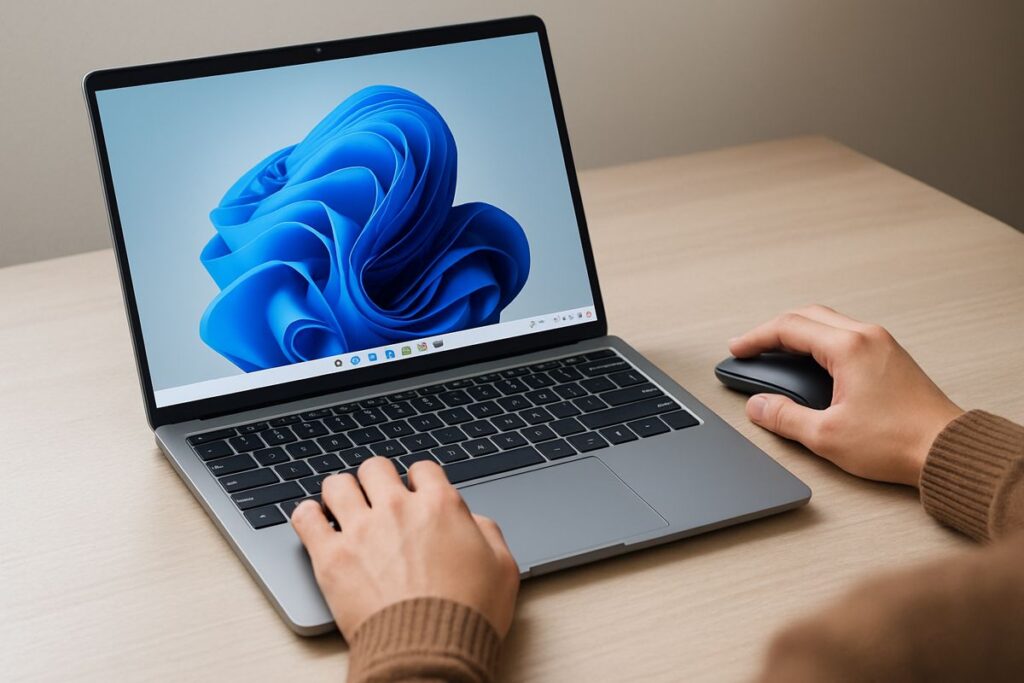Experience Seamless Scrolling in Windows Like Never Before
Discover how to enabling smooth scrolling on Windows and transforms your browsing and app navigation with effortless fluidity.

Understanding Scrolling
If you’ve ever scrolled through a long web page or Excel sheet on Windows and felt that “jerky” motion, you’re not alone.
Windows’ default mouse wheel behavior isn’t always smooth, and depending on your mouse or touchpad, scrolling can feel uneven — especially on high-refresh-rate displays.
This guide explains why scrolling feels choppy, how to fix it using built-in options, and the best way to achieve true buttery-smooth scrolling with the right software.
Why Scrolling Feels Jerky on Windows
By default, Windows scrolls a fixed number of lines per wheel tick — usually 3 lines.
This setting was designed years ago for low-refresh monitors and slower mice.
But on modern 120 Hz or 144 Hz screens, that fixed jump creates visible stutters.
Other causes include:
Inconsistent mouse polling rates
Low USB report frequency
Apps using non-synchronized scroll rendering (like Excel or File Explorer)
The result: a scrolling experience that feels rough or uneven, especially in long documents or browsers.
Enable Built-In Smooth Scrolling in Windows and Browsers
- In Microsoft Edge or Chrome
- Open chrome://flags (or edge://flags)
- Search for “Smooth Scrolling”
- Set it to Enabled
- Relaunch the browser
This gives mild improvement, especially in web pages — but it doesn’t affect Excel, File Explorer, or system-wide scrolling.
2. Adjust Mouse Scroll Lines
- Open Settings → Bluetooth & devices → Mouse
- Under “Roll the mouse wheel to scroll,” reduce the number of lines from 3 to 1.
This makes the scroll movement less jumpy but still not completely smooth.
The True Fix – Use a Smooth Scrolling Utility
For system-wide improvement, you’ll need a dedicated tool that replaces Windows’ linear scrolling with eased, animated motion — similar to macOS or mobile devices.
That’s where ButterScroll comes in.
ButterScroll is a lightweight Windows app that makes scrolling in every application, browsers, File Explorer, Office, even older desktop apps, feel fluid and responsive.
What Makes ButterScroll Different
Unlike browser-only extensions, ButterScroll runs system-wide and works with:
- Edge, Chrome, Firefox, and Brave
- Excel, Word, PowerPoint
- File Explorer and Control Panel
- Third-party apps and IDEs
It also offers customization rarely seen in other utilities:
- Adjustable scroll speed, duration, and acceleration
- Optional bounce effect and easing curve
- Profiles for different devices or apps
- “Start with Windows” and tray mode support
- 15-day free trial and one-time lifetime license
Once you use it, standard Windows scrolling feels outdated.
Try ButterScroll → Download from ButterScroll.com
Tips for Best Smooth Scrolling Experience
- Set your display refresh rate to 120 Hz or 144 Hz if supported.
- Keep “Lines to scroll at a time” to 1.
- Fine-tune ButterScroll’s speed and duration until motion feels natural.
- Check ButterScroll User Guide: How to Use ButterScroll?
Final Thoughts
Smooth scrolling isn’t just a luxury — it changes how natural your PC feels to use.
Windows’ built-in options offer small improvements, but a refined tool like ButterScroll delivers that truly silky, touch-like scrolling experience across every app.
Explore ButterScroll → https://butterscroll.com